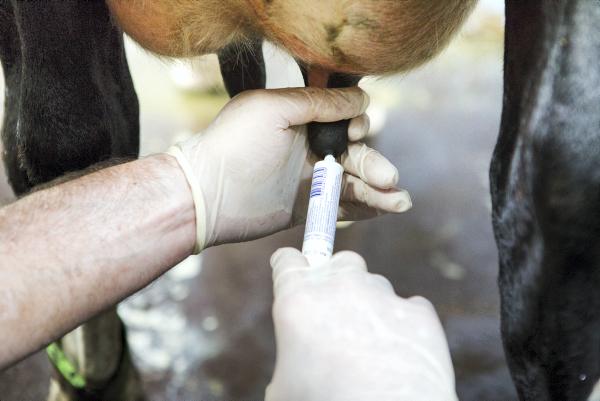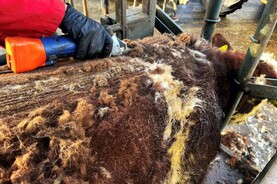I had a conversation recently with a client regarding mastitis in his springing or freshly calved heifers in the last few years. It must be one of the most frustrating headaches that a dairy farmer faces.
It is disheartening to see heifers reduced to three teats, as is often the result, or even culled so early in their milking lives. It is a problem that has a lasting effect, as studies have shown that, if kept in the herd, these animals suffer a 15% lifetime production loss.
With the expected increase in heifers calving in spring, it is worth considering what steps can be taken from now on to prevent this ever-increasing problem.
Of obvious benefit is to improve udder cleanliness in the weeks prior to calving by providing clean, dry bedding. If possible, springing heifers should be housed separately from the cows as they are very prone to bullying and will be forced to lie in less clean areas.
Most dairy farmers will agree that mastitis in heifers is often accompanied by severe flagging of the udder and this oedema is known to be a significant risk factor.
Can this severe flagging be prevented? Over-fat heifers are more likely to suffer from it and there is a hereditary aspect, so selective breeding will help, as well as avoiding excessive feeding pre-calving.
Reducing dietary sodium and potassium pre-calving has also been shown to help. A severely flagged heifer dripping milk pre-calving is a high-risk animal and should be milked out and her colostrum frozen to be subsequently fed to her calf. This will greatly reduce the oedema.
Once the heifer calves, it has been shown that early removal of the calf and early first milking greatly reduces the occurrence of both clinical and subclinical mastitis.
It is common practice in New Zealand to use teat seal in heifers, in particular where the incidence of mastitis in herds occurs in more than 15% of heifers.
The seal is inserted four to six weeks pre-calving and obviously a sterile technique is essential. If done properly, this will prevent the introduction of bacteria into the gland and also reduce milk dripping pre-calving.
The reader will remark that this sounds like a good way to get your hand broken, but in New Zealand, trials have shown that it reduces subclinical mastitis in heifers at calving by 65% and clinical mastitis in early lactation by 50%.
In that country, it is carried out by trained technicians in a farm relief-type service. It is definitely something to consider in the face of persistent problems and its practice is likely to become commonplace here too.
The practice of teat dipping or spraying heifers in the weeks prior to calving has also been shown to be of great benefit. This can be done in the parlour twice weekly in the three weeks prior to calving, while also feeding them meal which helps to familiarise them with the parlour.
At times, I have been asked if antibiotics should be used as a preventive tool, but from a cost and residue risk viewpoint it makes little sense, as well as the fact that we need to get away from the overuse of these drugs.
It is also beneficial when milking heifers to take your time and not risk injury to the teats by rushing them.
General measures taken to improve the health of heifers, such as dosing for fluke, worms and lice, and the provision of good-quality feed and housing, will also help prevent mastitis by ensuring their immunity is not compromised.
*Dan O’Neill works at Ormonde Veterinary, Barrack St, Kilkenny. Ormonde Veterinary is part of XLVets, a group of progressive practices working to achieve a better future.






 This is a subscriber-only article
This is a subscriber-only article










SHARING OPTIONS: